Health exams for: #AGEGROUP#
The following exams, tests, and procedures are recommended for #AGEGROUPLOWER#.#FEMALETEXT#
Select a link from the list below to learn how and why each test is performed, as well how to prepare for it.

The following exams, tests, and procedures are recommended for #AGEGROUPLOWER#.#FEMALETEXT#
Select a link from the list below to learn how and why each test is performed, as well how to prepare for it.
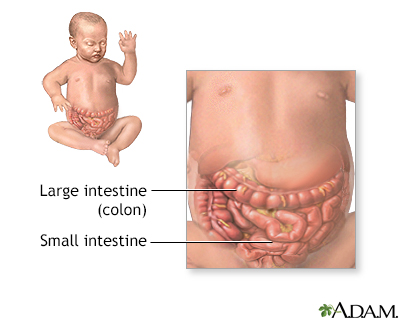
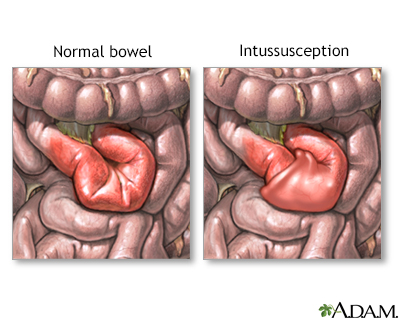
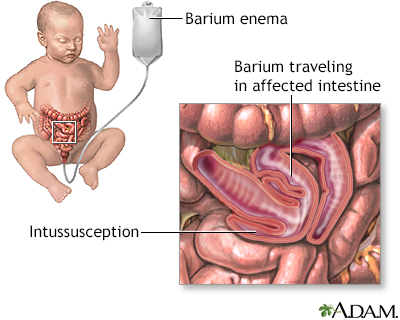
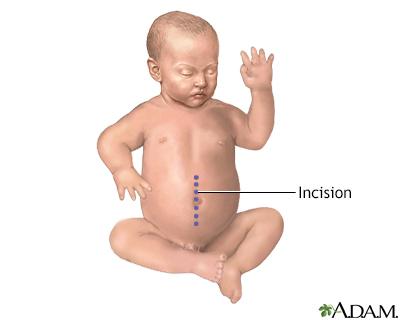
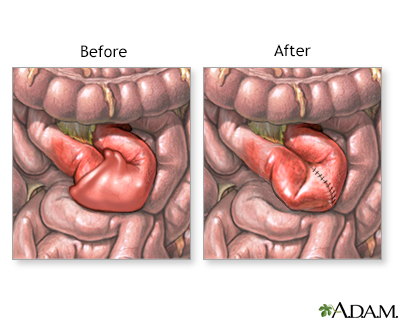
The small intestine is basically a long tube through which digested food passes.
The small intestine is basically a long tube through which digested food passes.
Intussusception is a common cause of bowel obstruction in children. It occurs when a segment of small bowel telescopes on itself, thus causing swelling, obstruction, and eventually intestinal gangrene.
Intussusception is a common cause of bowel obstruction in children. It occurs when a segment of small bowel telescopes on itself, thus causing swelli...
Intussusception is suspected if the child has experienced sudden, severe abdominal pain, blood and mucous in the stool, and vomiting. Abdominal X-rays are usually taken to confirm the diagnosis. A barium enema may be used for diagnosis. Barium, a heavy, radio-opaque dye, is administered through the rectum, fills the bowel, and allows for visualization of the bowel by x-rays. This procedure is sometimes successful in correcting the problem - the weight of the barium itself in the bowel frequently reduces the telescoped bowel. If intussusception is diagnosed and not corrected by barium enema, surgery is necessary IMMEDIATELY to prevent complications such as obstruction, gangrenous bowel and peritonitis.
Intussusception is suspected if the child has experienced sudden, severe abdominal pain, blood and mucous in the stool, and vomiting. Abdominal X-ray...
While the child is deep asleep and pain-free (using general anesthesia), an incision is made in the abdomen, usually in the midline. The bowel obstruction site is located, the obstruction is relieved, and the bowel is examined for injury. Injured sections are removed and the healthy ends of the bowel are either stitched together or brought out onto the abdomen temporarily (colostomy).
While the child is deep asleep and pain-free (using general anesthesia), an incision is made in the abdomen, usually in the midline. The bowel obstru...
Generally, patients are able to go home within 5 to 10 days after surgery, depending on how long it takes the intestines to recover from the surgical procedure.
Generally, patients are able to go home within 5 to 10 days after surgery, depending on how long it takes the intestines to recover from the surgical...
Review Date: 2/28/2022
Reviewed By: Debra G. Wechter, MD, FACS, General Surgery Practice Specializing in Breast Cancer, Virginia Mason Medical Center, Seattle, WA. Also reviewed by David Zieve, MD, MHA, Medical Director, Brenda Conaway, Editorial Director, and the A.D.A.M. Editorial team.



